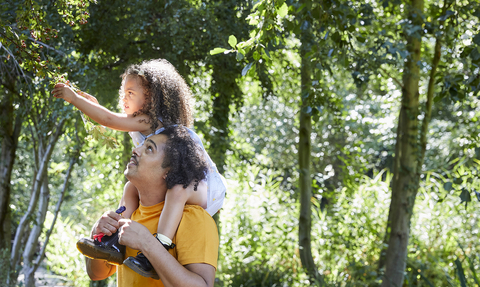
Credit Arnhel de Serra
Reuniting Sydenham Hill Wood and Dulwich Wood
What is the project?
A dynamic project to reunite the ancient and popular woodlands of Sydenham Hill Wood and Dulwich Wood in south London, has moved to a new three-year phase led London Wildlife Trust.
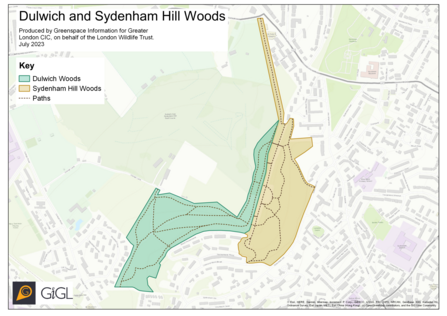
The project will bring together the two ancient woodlands (known locally as either Dulwich Wood or Sydenham Wood), while delivering a host of physical improvements and public benefits to this much-loved local resource and green space, which received over 300,000 visitors in 2020.
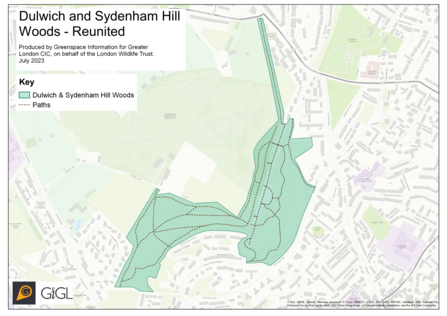
London Wildlife Trust is spearheading the project and through a one-year development phase has consulted with local communities and organisations to gain a better understanding of how the woods could be conserved and improved, as well as become more welcoming and accessible to a wider range of people, while at the same time enhancing precious wildlife habitats.
The National Lottery Heritage Fund has generously awarded a round two grant of £1,020,000 to the Trust to support the devlivery of 'Reuniting Sydenham Hill Wood and Dulwich Wood'. The project is in partnership with The Dulwich Estate and Southwark Council.
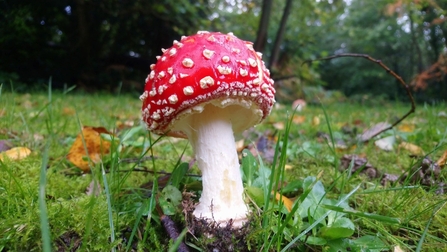
Read the announcement news story for the project to find out more.
In 2024, the Trust’s plan for the woodlands has entered into a three-year delivery phase.
During the three-year delivery phase, the Trust will carry out the plans that were recently developed in our one-year development phase. This will consist of a range of nature restoration and infrastructure works (dome examples included improving paths, new interpretation boards and way-finding signage, and improved entrances). Alongside this there will be a varied programme of activities within the woods, particularly involving underserved local communities, by introducing new volunteering opportunities, a learning programme for schools and families, and a community engagement programme.
The development phase
(May 2023 - April 2024)
Public consultation - June to November 2023.
The Trust submitted a consultation report to the NLHF as part of a round two application for a 3-year delivery phase grant. This report was used to inform the development of the project’s Activity Plan.
Fungi report - autumn 2023
The first formal fungi survey was undertaken of the woods and 131 species were recorded.
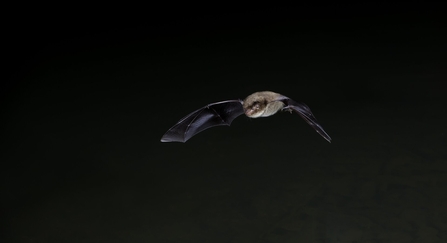
© Dale Sutton/2020vision
Bat survey report - summer 2023
Bat surveys were undertaken to update the ecological data for the woods.
Deadwood invertebrate survey report - summer 2023
A survey was taken of the deadwood invertebrates in the woods, underlining the national significance of the woods for 'saproxylic' invertebrates that live within 'dead' and decaying wood.
Detailed information about Reuniting Sydenham Hill Wood & Dulwich Wood
What does ‘reunite’ mean?
By ‘reunite’ we mean bringing Dulwich Wood into the same programme of management that has been undertaken at Sydenham Hill Wood since 1981. This means improving paths to the level of those found in Sydenham Hill Wood, creating core fenced areas for woodland recovery and regeneration, and creating events and education programmes. All this work will be delivered with the support of The Dulwich Estate, who own Dulwich Wood, and Southwark Council, who lease Sydenham Hill Wood to London Wildlife Trust.
Who owns the woods?
‘The woods’ are made up of three different parcels of land: Cox’s Walk which is owned by Southwark Council and managed by the Trust; Sydenham Hill Wood is leased to the Trust from Southwark Council and is managed as a nature reserve by the Trust; and Dulwich Wood which is owned by The Dulwich Estate.
Where are the woods?
The woods are located in Dulwich in the London Borough of Southwark, near to Sydenham, Forest Hill and Crystal Palace. Sydenham Hill Wood can be accessed via Cox’s Walk on Dulwich Common/Lordship Lane, or on Crescent Wood Road just off Sydenham Hill; Dulwich Wood can be entered via Sydenham Hill Wood’s open boundary, or at Low Cross Wood Lane or Grange Lane on the Dulwich side.
Why are the woods important?
The woods have been in existence for several thousand years and are the largest remaining tract of what is known as the Great North Wood. The woods are likely to have grown without humans planting them, at some stage after the end of the last glacial period 12,000 years ago. The woods have been managed for their timber and other wood products over the past 1000 years and likely further back. They are home to plants, animals and fungi which are only found in ancient woodlands (woodlands which are older than 400 years) which means their ecology is subject to protections that are not provided for other local parks or green spaces. The woods are also highly significant to people locally through walking and nature connection. In 2020 there were over 343,000 recorded visits to the woods, highlighting the significance as a place of public access and nature connection.
Why is a project needed?
The woods are experiencing the highest visitor numbers in their modern history and possibly ever. In 2020 there were over 343,000 visits to the woods, increasing from 189,645 in 2019. This has meant that the woodland’s soils and wildlife habitats have experienced high impact which have resulted in a decline in trees, plants and other natural elements of the landscape. The footpaths which have been in place for decades previously are now no longer suitable to allow safe and sustainable visitor numbers. The project will rebuild the main pathways in Dulwich Wood and to install temporary chestnut paling fencing to protect eroded areas of the woodland where trees and plants are now unable to grow due to soil damage.
Who will benefit from the project?
There is a strong community engagement focus for the project. The Trust will work with local residents, with an intention to engage the closest areas of housing at the Kingswood Estate, the Sydenham Hill Estate, Lordship Lane Estate and Countisbury House. The project will ensure that local people are able to enjoy the benefits of visiting the woods and develop a connection with the nature on their doorstep. In consultation with partners and communities, plans have been developed for events, guided walks, education sessions for schools and family learning opportunities, as well as a range of volunteering for people to forge a stronger connection and appreciation for the woods.
How will wildlife benefit from the project?
The Trust is the only organisation focused on protecting London’s wildlife and enhancing wildlife habitats in the capital. The Trust has managed Sydenham Hill Wood since 1981, with a strong partnership developed with The Dulwich Estate since 2011 in undertaking improvements in Dulwich Wood. The project will undertake ecological surveys to improve understanding of fungi, rare invertebrates and bats in the woods. A programme of volunteering will be expanded to deliver ongoing improvements for wildlife led by local people. This will include controlling invasive species of trees such as cherry laurel, and increasing populations of locally rare woodland plants such as bluebell, wood anemone and ramsons. Temporary areas of conservation fencing will be installed to protect mature trees and woodland soils from erosion caused by unmanaged footfall.
How will the woods have changed by the end of the project?
Dulwich Wood will see big improvements through the upgrading of paths and associated drainage. This means that people will no longer have to avoid paths due to mud and flooding, often leading to people accidentally eroding soil and damaging wildflowers through creating new smaller paths known as ‘desire-lines’. There will be some new areas of chestnut paling fencing to protect damaged woodland areas. The changes will result in recovering woodland habitats in the decades ahead, rather than seeing trees planted over the project’s timespan. For example, we expect to see increased spreads of English bluebells in the spring, its populations having recovered due to land management interventions to protect them.


